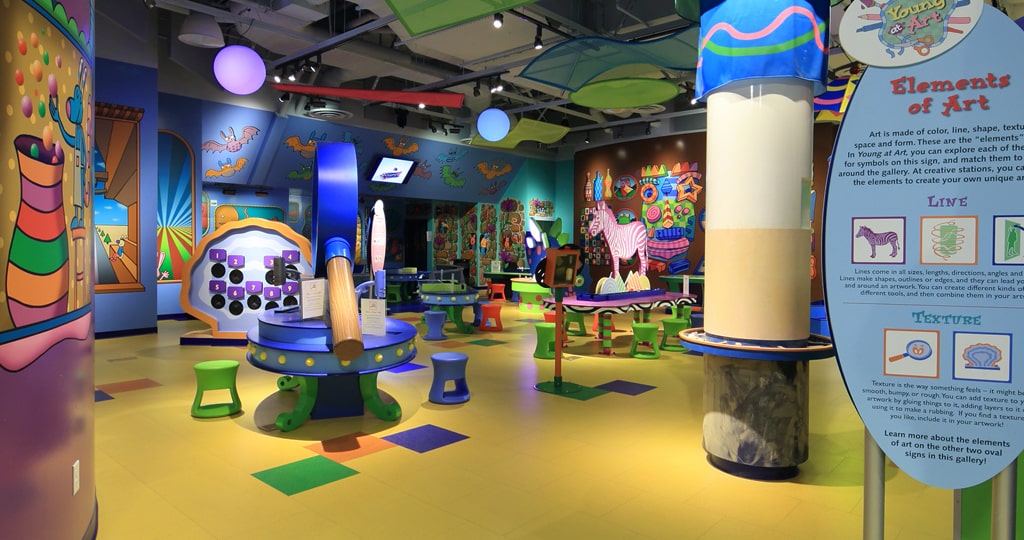What makes a good theme park? Is it the attractions? Its layout? How easy it is to move around despite large crowds? The behind-the-scenes infrastructure?
All the above and more combine to ensure cherished memories for patrons—and it takes an experienced, innovative theme park construction company to make it all come together.
We’ve mastered theme park construction coordination, thanks in part to our work on some critical projects at Universal Studios in Florida. Here’s how we made it happen.

Understanding the master plan
Because theme parks are so singularly focused on user experience, they’re usually always built, renovated or expanded according to a master plan.
Theme parks evolve over generations. Contractors come and go, but master plans do not. That’s why a contractor should make a careful study of the master plan as soon as they’re selected for a project. Master plans often include details regarding:
- The phases of expansion of a theme park, including the growth of the park’s footprint and the addition of new attractions.
- Planned renovations of existing areas of a park, including non-attraction infrastructure like utilities and patron pathways in addition to the elimination or substitution of aging attractions.
- Projected peak and minimum attendance figures.
- Theme park construction costs including how a project will be financed.
Following a master plan certainly endears a contractor to a theme park owner. And while that’s good, it isn’t the point. Master plans are labored over for years, accounting for all aspects of guests’ experiences. Following them ensures guests —the most important theme park stakeholder— get the most out of their visit. That secures the future of the theme park (and might form the basis of a long-term owner / contractor relationship in the process).
The importance of clear communication
During regular operation, theme parks are busy places. The same is true during construction projects.
What makes these jobs different is the amount of attractions (and support infrastructure) crammed into small, walkable spaces. Whether it’s new construction or renovation of an existing area of a theme park, construction crews will be in close quarters. That requires constant communication and flexibility among everyone working on a job.
What’s more, if the job is a renovation or expansion of an existing park, it’s likely the entire park won’t be shut down. Peak construction season is also peak theme park season, so areas that can be kept open will be. Park users and construction crews will have no choice but to coexist.
Contractors on theme park construction projects often find themselves playing the role of traffic cop, keeping subcontractors working efficiently and ensuring patron safety at the same time.
Universal Studios
The Korte Company cemented its position as a theme park construction company with its work at Universal Studios in Florida—perhaps the pinnacle of modern theme parks.
We were among the five contractors chosen for the job, and our work centered around “The Front Lot.” Structures built include:
- The Universal Studios Administration Building.
- The park’s ticket plaza.
- The Universal Studios store.
- Movie Memorabilia.
- A two-story multi-use building that houses a bank, café, photography studio and stroller rentals.
But the most memorable part of our work is the iconic Universal Studios globe fountain. Yeah, we built that.
Being among the five separate contractors and countless subcontractors on this large project meant we had to be organized, communicative and flexible as we carried out our portion of the job according to the park’s master plan.
Other attractions
Universal Studios isn’t the only feather we keep in our cap. We’ve built many cultural and entertainment facilities, and while they may not fit into the strict definition of “theme park,” the same principles apply. Here’s a rundown:
- Cahokia Mounds Museum and Interpretive Center – Collinsville, IL: This museum honors the history of a pre-Columbian Native American city that sat across the Mississippi River from present-day St. Louis. The 35,000-square-foot museum features a complex design that maximizes user experience. Our priority was building a structure that enhanced visitor experience with the narrative layout of the museum.
- Discovery Children’s Museum – Las Vegas, NV: This 54,000-square-foot tenant improvement job included building nine exhibit areas for traveling exhibits as well as a permanent eight-level climbing tower within the building’s three-story atrium. The museum sits within Symphony Park and is an integral part of a greater master plan to revitalize downtown Las Vegas.
- Hard Rock Cafe and retail center – St. Louis, MO: On its face, this is just another restaurant construction project. But dig a bit deeper and it’s far more. We built the popular restaurant and a neighboring retail space beneath the pavilion of iconic Union Station, once among the world’s busiest rail terminals. We’ve played a key long-term role in the redevelopment of Union Station, helping turn an abandoned train station into a top regional attraction.
Builders focused on your long-term vision
As a leading Design-Build construction company, The Korte Company is equipped with the team and talent required to see your vision through. Our cultural attraction and theme park construction experience puts us in position to deliver entertainment spaces that maximize user experience while also enhancing value to owners.
If you’re searching for a construction partner who will share your vision and commit to bringing it to life, The Korte Company might be the right fit. To help you prepare, we recommend you read our Top 9 things owners should know before starting a construction project. It’s a valuable guide customers in all markets can use as they gear up for an upcoming project. If you want to discuss your future plans in more detail, let’s talk now.

